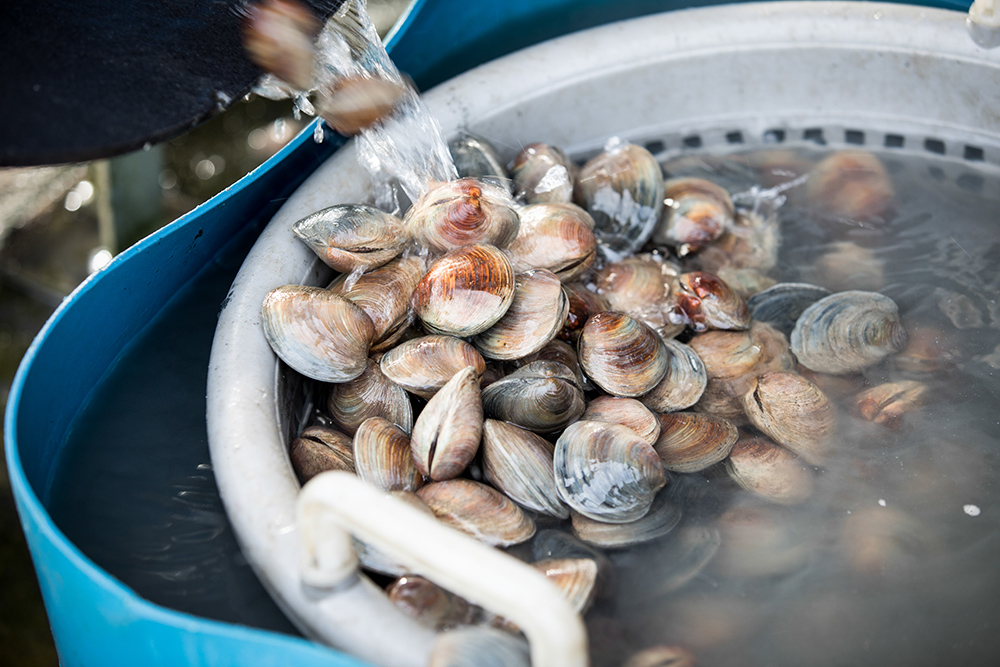If centipede is the grass of choice in your lawn, check now for tiny, two-lined spittle-bugs that could be destroying your lawn, bite by bite.
"If you walk across your grass and it's squishy, chances are, you've got two-lined spittle-bugs," said Kris Braman, an entomologist with the University of Georgia College of Agricultural and Environmental Sciences. "It sounds and feels like you are walking on a sponge."
K. Braman, UGA,
CAES 'SQUISHY'- FEELING LAWNS are probably caused by spittle-bug masses, above. Immature spittle-bugs, below, create these masses to protect themselves from predators and to keep from drying out. ÿÿ
K. Braman, UGA,
CAES |
This squishy sound comes from the spittle masses formed by the spittle-bug nymphs, or immatures. Braman says the young insects form spittle masses in the grass to protect themselves from predators and from drying out. "They also seem to like the moisture they create, so do anything you can to disrupt that high moisture environment," she said.
Braman says the first thing homeowners should do is get on their knees. "Get down low and part your turf," she says. "You want to look into the thatch area, between the green and soil and look for the spittle masses or the adult spittle-bugs."
Just a quarter-inch in size, the adult spittle- bug has a black, wedge or tent shaped body with two red lines across its back. Thus, the name two-lined spittle-bug. The "spittle"part of the name comes from the messy spittle masses the young insects create.
"They become very apparent every summer when they land on people trying to mow their lawns," said Braman.
Although the spittle masses the young create are not attractive, it's the adult spittle-bugs that cause the most damage to your lawn. "The adults have needle-like mouthparts to extract fluids from the plants," said Braman. "They inject a toxin that causes the grass to wither and turn brown."
A common turfgrass pest, spittle-bugs feed on centipede and other warm season grasses such as bermudagrass, zoysia and St. Augustine. In the Southeast, they also feed on some woody ornamentals.
"Some holly trees, such a 'Savannah' Holly, are preferred by adult spittle-bugs," said Braman. "If a tree has been infested, the new growth will be twisted and deformed and the leaves will have irregular brown blotches."
Braman says ornamental damage is caused by adult spittle-bugs. The nymphs of this species only feed on non-woody plants like turfgrass."If you see spittle masses in trees, they weren't put there by two-lined spittle- bugs," said Braman.
K. Braman, UGA,
CAES "Get down low and
part your turf," Braman says. "You want
to look into the thatch area,
between the green and soil and look for the spittle masses
or the adult
spittle-bugs." These wedge-shaped insects are only
about a quarter-inch long. "Get down low and
part your turf," Braman says. "You want
to look into the thatch area,
between the green and soil and look for the spittle masses
or the adult
spittle-bugs." These wedge-shaped insects are only
about a quarter-inch long. |
If you find two-lined spittle-bugs in your lawn, don't panic. "They are really visible insects and just because you see them, it doesn't mean your grass is going to die," said Braman.
The populations of two-lined spittle-bugs are high during the summer months. "This insect goes through two generations each summer," said Braman. "Adults begin to fly in June and a second set of adults will be seen in August."
The first step to reducing populations in your lawn is to keep your grass mowed to the proper height. "Just because your turfgrass is a low maintenance variety, doesn't mean it's a no maintenance variety," said Braman. "You have to keep the thatch area from being overdeveloped because that's where the insects are living."
The spittle-bugs also like the edges of the grass along the sidewalks and near hedges where the grass is shaded. "People sometimes over fertilize centipede and this is bad for several reasons," said Braman. "The spittle-bugs like the extra nitrogen and the grass doesn't. Centipede is naturally yellow- green, but people try to force it to be kelly green by over fertilizing."
Braman says this creates a thicker and denser grass, which is a favorable environment for two-lined spittle-bugs.
Working with UGA turfgrass breeders and horticulturists, Braman is researching turfgrass and holly cultivars that are resistant to harmful insects, such as the two-lined spittle-bug. Researchers have found avoiding landscape combinations like centipede turf and 'Savannah' hollies can be an easy solution to spittle-bug lawn problems.
If spittle-bugs are a problem in your home landscape, Braman suggests homeowners limit irrigation to avoid creating an environment that's a magnet for spittle-bugs. "Georgia's drought conditions may help reduce the populations this year, but irrigation favors the insect's development," said Braman.








